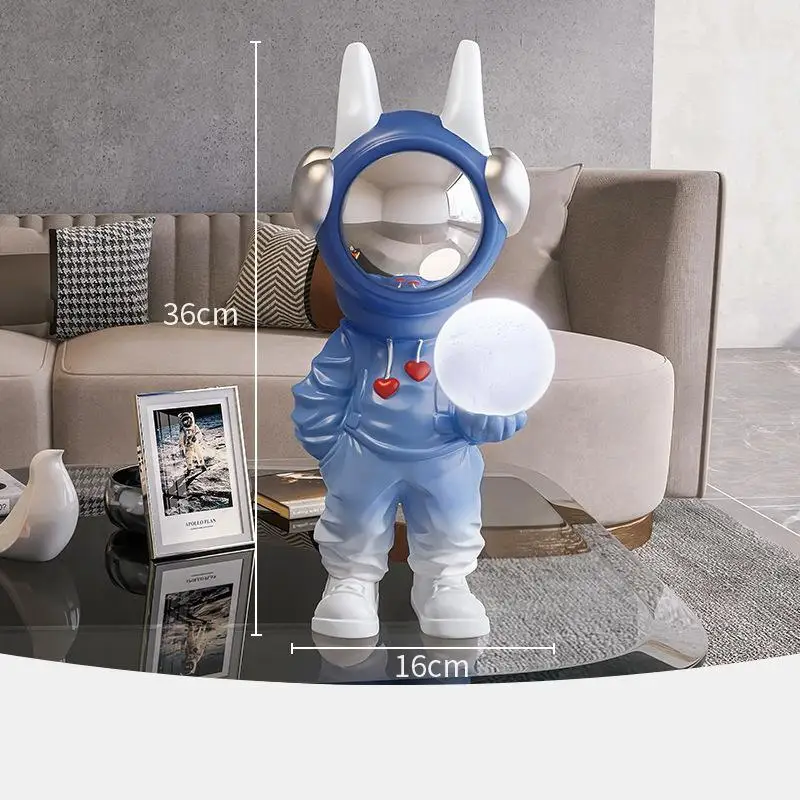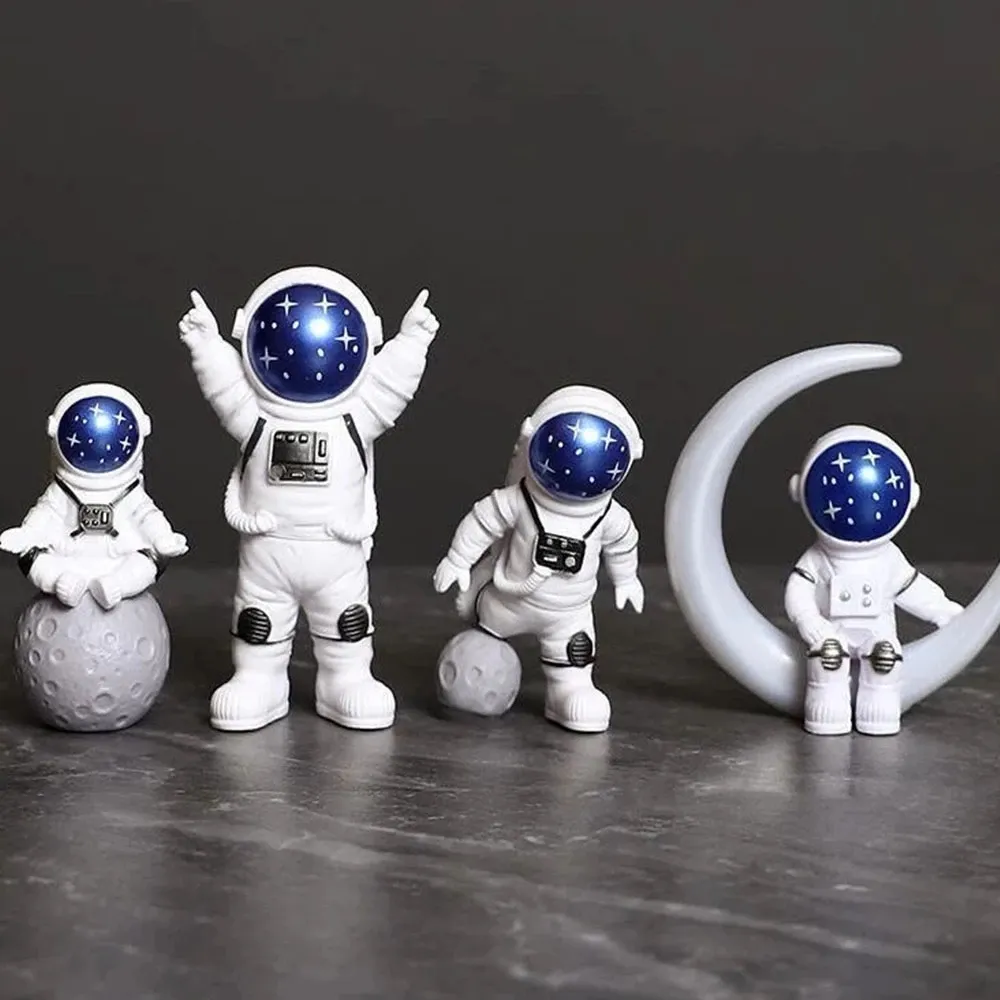How Cold is Space? Exploring the Chilling Temperatures of the Universe
The Frigid Nature of Outer Space
When we think of space, we often imagine it as a vast expanse of darkness filled with countless stars and planets. But have you ever wondered just how cold space can get? The temperatures in space are not only cold; they are downright freezing. In fact, outer space is one of the coldest places in the universe, with temperatures that can reach unimaginable lows.
The temperature in space varies depending on factors such as proximity to celestial bodies, presence of gases, and exposure to light. On average, the temperature in space can range from a frigid -455 degrees Fahrenheit (-270 degrees Celsius) to a bone-chilling -454 degrees Fahrenheit (-270 degrees Celsius). These temperatures are close to absolute zero, which is the lowest temperature possible.
⭐️ 4.7/5
Spaceman moon Lamp Statue
The Absence of Heat
One of the reasons space is so cold is the lack of heat. Unlike on Earth, where heat is generated by various sources such as the sun’s rays and the planet’s core, space is practically empty. There are no air molecules or other matter to conduct heat, which means energy cannot be transferred in the form of heat. This lack of heat makes space an inhospitable and freezing environment.
The absence of heat in space is also due to the vacuum-like conditions. In a vacuum, heat cannot travel through conduction or convection, as there are no particles to carry the thermal energy. Instead, heat can only be transferred through radiation. However, in space, even radiation is limited, leading to extremely low temperatures.
The cold temperatures of space have significant implications for astronauts and space exploration. It means that spacesuits and spacecraft must be equipped with advanced insulation and heating systems to protect against the freezing conditions outside.
⭐️ 4.8/5
Chilling Astronaut Statue
The Cosmic Microwave Background
Another fascinating aspect of space’s coldness is the existence of the cosmic microwave background (CMB). The CMB is the remnant radiation from the Big Bang, which occurred approximately 13.8 billion years ago. This radiation permeates all of space and has an average temperature of about -455 degrees Fahrenheit (-270 degrees Celsius).
While the CMB provides a natural source of heat in space, it is still incredibly cold. This radiation is spread throughout the universe and is responsible for the uniformity in temperature observed in different parts of space. Despite its frigid nature, the CMB is an essential piece of evidence for the Big Bang theory and helps scientists understand the origins and evolution of the universe.
In conclusion, space is an incredibly cold place. With temperatures reaching close to absolute zero, space is devoid of heat and possesses a chilling environment. The absence of heat and the presence of the cosmic microwave background contribute to the extreme coldness experienced in space. Understanding these frigid temperatures allows us to develop the necessary technology to explore and survive in the vastness of the universe.
Surviving the Extreme Cold: How Astronauts Brave the Freezing Temperatures
When astronauts venture into space, they must face the extreme cold temperatures that await them outside the confines of their spacecraft. To withstand these freezing conditions, astronauts rely on advanced technologies and carefully designed spacesuits that provide them with the necessary protection against the chilling temperatures of space.
Astronauts wear spacesuits that are specifically designed to maintain a comfortable temperature for the wearer. These spacesuits consist of multiple layers of insulation, each with its own function. The outermost layer serves as a barrier against micrometeoroids, while the inner layers provide thermal insulation to keep the astronaut warm.
⭐️ 4.8/5
Floating Astronaut Statue
Heating Elements
One of the crucial components of a spacesuit is the heating system. The heating elements in the spacesuit help regulate the astronaut’s body temperature and prevent them from succumbing to the intense cold of space. These heating elements are strategically placed throughout the suit, primarily in areas vulnerable to extreme temperature drops.
Additionally, the spacesuit’s life support system circulates warm air throughout the suit, ensuring a consistent temperature for the astronaut. This airflow also helps with moisture management, preventing excessive sweating that could lead to hypothermia in the freezing environment.
The heating system in a spacesuit is powered by the same energy source that fuels the entire suit, such as batteries or a portable life support system. This energy source is carefully managed and monitored to ensure a reliable and efficient supply of heat for the astronaut.
⭐️ 4.9/5
Astronaut Storage Lamp Statue
Advanced Insulation
Another critical aspect of spacesuits is the advanced insulation materials used in their construction. These materials help trap heat within the suit and prevent it from escaping to the cold vacuum of space. Insulation is strategically placed in areas that are most susceptible to heat loss, such as the joints and extremities.
The insulation materials used in spacesuits are often multi-layered and incorporate reflective coatings to minimize heat transfer through radiation. These coatings reflect thermal radiation back towards the astronaut, reducing heat loss and maintaining a stable body temperature. The insulation also serves as a protective barrier against micrometeoroids and other potential hazards in space.
Overall, the combination of heating elements and advanced insulation technologies allows astronauts to withstand the extreme cold temperatures of space. These carefully designed spacesuits provide the necessary thermal regulation and protection for astronauts, ensuring their safety and enabling them to carry out their missions in the cold expanse of the universe.
Impact on Scientific Research: How Extreme Cold Unveils the Mysteries of Space
The freezing temperatures of space have far-reaching implications for scientific research and our understanding of the universe. As scientists continue to explore the frigid depths of space, they uncover new knowledge about celestial bodies, cosmic phenomena, and the history of the universe itself.
The extreme cold in space allows scientists to observe and study various cosmic phenomena that are not observable under normal terrestrial conditions. For example, low temperatures enable the detection of faint signals from distant galaxies, giving scientists insights into the formation and evolution of these celestial bodies.
⭐️ 4.6/5
Chilling Astronaut Moon Lamp Statue
Cryogenics and Superconductivity
Extreme cold also plays a crucial role in the field of cryogenics and superconductivity. Cryogenics involves the study of materials and their behavior at low temperatures, while superconductivity refers to the phenomenon where certain materials exhibit zero electrical resistance at extremely cold temperatures.
By cooling materials to near absolute zero, scientists can observe unique properties and phenomena that are not present at higher temperatures. These include exceptionally low electrical resistance, levitation in the presence of magnetic fields, and the ability to store and transport energy with minimal losses.
The study of cryogenics and superconductivity has various practical applications, such as the development of more efficient electrical systems, advanced medical imaging techniques, and the exploration of quantum computing.
⭐️ 4.9/5
Astronaut figurines 4 pcs
Origin and Evolution of the Universe
Perhaps one of the most profound impacts of extreme cold in space is its role in unraveling the mysteries of the universe’s origin and evolution. By studying the cosmic microwave background (CMB) and the temperature fluctuations within it, scientists can gain insights into the early stages of the universe.
These temperature fluctuations provide valuable information about the conditions that existed shortly after the Big Bang, helping scientists understand how matter and galaxies formed, as well as the subsequent evolution of the universe over billions of years.
In conclusion, the extreme cold temperatures of space have a significant impact on scientific research. They facilitate the study of celestial bodies, enable advancements in cryogenics and superconductivity, and provide insights into the origin and evolution of the universe. As scientists continue to explore the chilling depths of space, they will undoubtedly uncover more secrets and expand our understanding of the cosmos.
Unlocking the Secrets of the Frigid Universe
Space, a place of darkness and mystery, is not only vast but also incredibly cold. With temperatures hovering close to absolute zero, space presents a challenging environment for both humans and scientific exploration. The absence of heat and the existence of the cosmic microwave background contribute to the chilling temperatures experienced in space. However, through advanced technologies and carefully designed spacesuits, astronauts brave the extreme cold and venture into the frigid depths of the universe.
The extreme cold in space also offers unique opportunities for scientific research. It allows scientists to observe distant galaxies and cosmic phenomena that are not visible under normal conditions on Earth. The study of cryogenics and superconductivity at low temperatures opens doors to new technologies and practical applications. Additionally, the extreme cold plays a crucial role in understanding the origin and evolution of the universe, as the cosmic microwave background holds valuable information about the early stages of our cosmos.
As we delve deeper into the mysteries of space, the extreme cold temperatures continue to inspire scientific endeavours and unlock the secrets of the frigid universe. Through exploration and innovation, we gain a better understanding of the cold expanse that surrounds us, shedding light on the astounding wonders that await beyond our planet.







